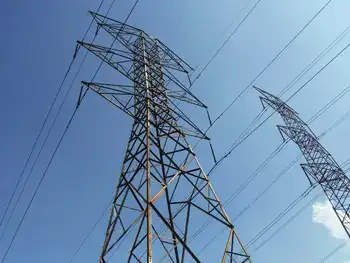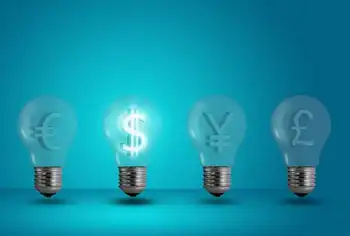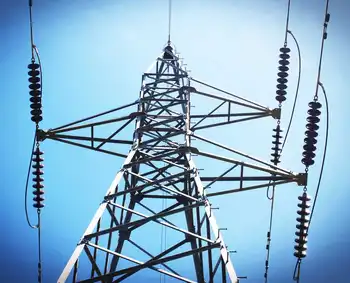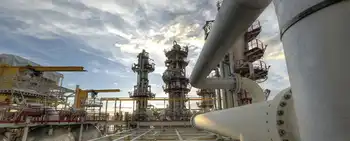Coal to wood: a power plan for Ontario
By Globe and Mail
NFPA 70e Training
Our customized live online or in‑person group training can be delivered to your staff at your location.

- Live Online
- 6 hours Instructor-led
- Group Training Available
By 2006, it had pushed the deadline back to 2014, where it stands to this day - a bold affirmation of good intentions. The government now holds that the promise, by itself, is progress. "There is only one place in the world that is phasing out coal-fired generation," Liberal Premier Dalton McGuinty asserted in the 2007 provincial election. "We're doing it right here in Ontario." Note Mr. McGuinty's present-tense pride in future-tense achievement.
Even as Mr. McGuinty spoke these words, though, New Hampshire's biggest utility company was doing what Ontario aspired to do. On December 1, 2006, Public Service Co. of New Hampshire (PSNH) replaced a coal-fired plant with a wood-fired plant in the Atlantic seacoast city of Portsmouth. The first such conversion in North America, this plant generates 50 megawatts of electricity, enough to power more than 50,000 homes.
Just recently, PSNH took a few minutes at its Portsmouth headquarters to celebrate a milestone in wood-heat generation — the plant's one-billionth kilowatt-hour of energy.
Designated formally as Northern Wood Power at Schiller Station, the wood-fired plant gets its fuel from its own heavily forested neighbourhood. Most of the loggers who supply the plant with low-grade wood are family operations — and most of the 400,000 tons of wood chips they produce each year come from stumps, brush, small branches and tops of trees that would otherwise be discarded.
The company has documented an impressive environmental record. The wood chips replace 130,000 tons of coal a year — or 400,000 tons since the plant went into operation. It has eliminated 6,500 tons of sulphur dioxide emissions and one million tons of carbon dioxide emissions. PSNH says the use of wood releases 70 per cent less nitrogen oxide than coal, 90 per cent less mercury, 95 per cent less sulphur dioxide and, further, produces only insignificant amounts of particulate matter.
The plant doesn't burn wood chips in the familiar wood-on-grate manner of cook stoves and fireplaces. The boiler converts water to superheated, high-pressure steam, which spins the turbines, in the usual way. But the wood circulates aloft, suspended in air in the combustion chamber, producing a more complete burn. The entire process is carbon-neutral.
Northern Wood Power is a subsidized experiment. What environmental experiment isn't, these days? A wood-fired plant does cost more to operate than a coal-fired plant. New Hampshire's subsidy is part of an emergent cap-and-trade program that now covers 29 states. Companies that reduce emissions are given "renewable energy certificates," which are licences to emit carbon dioxide that can be sold. Whatever its limitations, the program has successfully induced pragmatic experimentation.
The environmental superiority of wood-fired electricity, by the way, was confirmed for Ontario when a team of eight scientists associated with a University of Toronto research program reported its findings: Using wood pellets instead of natural gas, they calculated, reduces greenhouse-gas emissions by 78 per cent. Using wood pellets instead of coal reduces GHG emissions by 91 per cent.
In a program financed in part by Ontario Power Generation, the Crown corporation that produces 70 per cent of Ontario's supply of electricity, the researchers calculated the "life cycle" costs of generating power from wood, coal and natural gas. In this analysis, coal remained the cheapest method but wood proved remarkably superior in environmental efficiency.
As with Mr. McGuinty, though, so also with this research team: "Our study is the first one that analyzes 100 per cent biomass usage in coal generation power stations," the team said. Except for the people who got there before us, in other words, we could come first. Nevertheless, "the results from this analysis are expected to provide valuable insight for decision making in the sustainable development of future electricity generating systems."
The researchers make a persuasive case for dumping coal and using wood in Ontario's coal-fired plants, describing the switch as the province's best "near-term option."
"In contrast to many other renewable generation options," they said, "biomass firing does not have the drawback of being intermittent and is applicable in areas without significant wind, solar or hydropower resources.... [It] requires low capital expenditures.... [It can be used] with virtually all types of coal boilers.... There are no major technological obstacles." Oh, yes. Ontario could revive its forest industry at the same time, essentially for free — transforming the money it now uses to import coal (and to fund "stimulus programs") into reliable, productive incomes for loggers and pellet makers.
The documentary proof is in New Hampshire. "We are producing the same amount of power [with wood as with coal]," Northern Wood Power plant manager Dick Despins said in celebration of his company's wood-fired one billion kwh. "We are using a local, renewable fuel source. Our emissions are lower. The dollars we spend stay close to home."
In this instance, the conclusion is inescapable. Ontario fiddled while New Hampshire burned.















